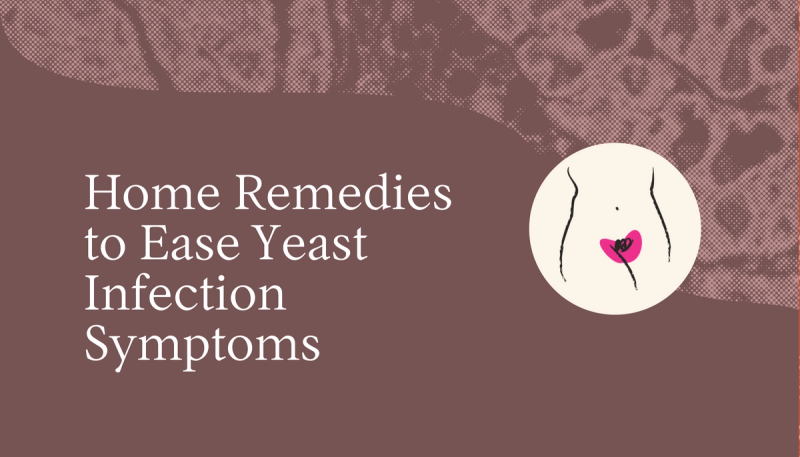
Tia Guide
Home Remedies to Ease Yeast Infection Symptoms
Most women know what a yeast infection feels like. If you’re one of the fortunate few who haven’t gotten one, talk to four women and at least three of them can tell you all about it, since at least 75% of all people with vaginas have experienced one. For the most part, yeast is a good thing. It’s also a normal and natural part of the vaginal microbiome. Usually, vaginal yeast doesn’t cause any issues. But certain circumstances (taking antibiotics) and health conditions (compromised immune system, diabetes, pregnancy) can cause yeast to overgrow. And this can cause problems.
Thankfully, yeast infections aren’t dangerous, but the symptoms are seriously uncomfortable: intense itching, burning when you pee, discharge that can look like cottage cheese, painful sex. As you likely know, there are several over-the-counter antifungal medicines (Monistat, Vagisil) that are highly effective in eradicating yeast infections. But there are some pretty cool home remedies that may work as well.
So, if you’ve ever been curious about getting crafty and self-treating a yeast infection at home, you might find some of the methods highlighted in this article worth trying the next time yeast decides to hijack your vaginal health.
But first, a word of warning: Little scientific evidence exists to support the efficacy of most home remedies to treat yeast infections. And, since everybody and every body is unique, some of these remedies may cause additional discomfort and irritation. Most health practitioners still recommend treating yeast infections with traditional topical or oral antifungals. But there is enough anecdotal evidence to support these non-traditional remedies as long as you talk to your provider beforehand and use them as directed.
Need more care than home remedies? Sign up for Tia's membership and schedule an appointment with a Tia provider in one of our clinics - Located in Los Angeles, San Francisco, Scottsdale, and New York City.
Home Remedies for Yeast Infections
Boric Acid
Boric acid suppositories are definitely one of the most popular home treatments for yeast infections. Most often used for recurrent infections, boric acid has natural antifungal properties. That said, it should be used with caution and never take orally. Boric acid can be fatal if swallowed and pregnant women should never use boric acid.
Probiotic Supplements
Probiotics are beneficial bacteria that promote a healthy balance of microorganisms in the body. Probiotic supplements and suppositories may help fight a yeast infection when combined with antifungal medications, but it’s not clear if they can be effective on their own.
Yogurt
Yogurt containing Lactobacillus acidophilus (L. acidophilus) is a type of probiotic ("good" bacteria) found in the human gut, mouth, and vagina, and also in certain foods.
Tea Tree Oil
Like boric acid, tea tree oil also has natural antifungal properties and may provide relief from yeast infections. A few drops of tea tree oil diluted with a carrier oil, like olive or avocado oil, can be applied topically to the affected area. Never ingest tea tree oil as it can be toxic if swallowed.
Garlic
Some evidence suggests garlic may help kill
Candida albicans is a naturally occurring fungus that lives on your body. Overproduction of candida (yeast) can cause infections.
Coconut Oil
Research suggests coconut oil, which has antifungal properties, can be effective against yeast overgrowth. At the very least, it can likely soothe itching and irritation. Buy a pure, organic coconut oil and apply it directly to any affected areas.
Apple Cider Vinegar
Apple cider vinegar baths are another popular home remedy for yeast infections. Adding ½-1 cup of raw, unfiltered apple cider vinegar to a warm bath and soaking for 20 minutes can be beneficial and ease the symptoms associated with yeast infections. But vinegar can cause irritation with extended exposure, so observe how your body is reacting and limit the use of this home remedy if you're experiencing negative side effects.
Seeking Medical Guidance
While home remedies can offer some relief for mild yeast infections and are generally safe, it’s essential to consult with a healthcare professional if symptoms persist or worsen. Additionally, people with underlying health conditions or compromised immune systems should seek medical advice before trying home remedies. Even if anecdotal evidence about the efficacy of home remedies is strong, scientific evidence is scarce and most providers still recommend traditional antifungal medications as first-line treatment. If you’re curious about trying a home remedy or two, the best advice is likely to go slow. Talk to your care provider first. Don’t combine too many methods at once in case something causes irritation or another side effect. And, of course, discontinue use if you experience any cumbersome side effects.